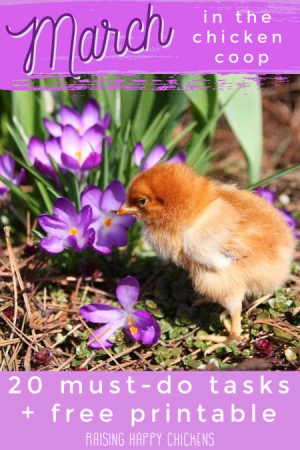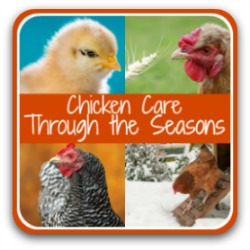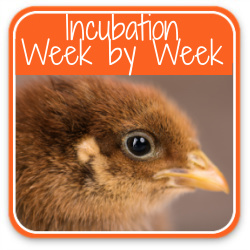- Home
- Monthly care
- March
Raising Chickens in March.
What tasks are awaiting you in the chicken coop this month? Here are my 20 must-dos!
Note: If you're in the southern hemisphere and starting to prepare for autumn, take a look at this section of the monthly chicken care articles.
Are you in my newsletter group? If so, you'll be able to download your handy downloadable checklist for this month's tasks from the newsletter digest which comes to you in the first week of each month.
If you're not in my newsletter group, why not join? You won't find the free checklist anywhere else. Click here for more information.
March in the chicken coop. Nights are slowly getting shorter, and clocks in the northern hemisphere spring forward an hour.
So mornings start to become a little lighter and the weather is beginning to grow warmer.
Mardi Gras (or Pancake Tuesday!) is coming up, Easter doesn't seem so far away, bulbs are beginning to push through, hens are coming back into lay...
Suddenly the world seems a happier place.
Let's take a look at what needs doing for our flock this month to make their world a happier place, too!
1. Feed hens well!
As daylight lengthens, hormones kick in and hens raised as egg-layers start producing again. Our supply of delicious fresh eggs begins to ramp up after the lesser supply of the winter months.
With that comes a need for making sure their feed is enough to produce the most nutritious eggs with strong shells.
And if you're thinking of using them as broody hens to hatch their own chicks, there's a whole body of evidence that hatching is affected by the quality of food laying hens eat.
Either way, it's time to think about making sure the ladies get the very best food, both for their own health and to produce the next generation of chicks.
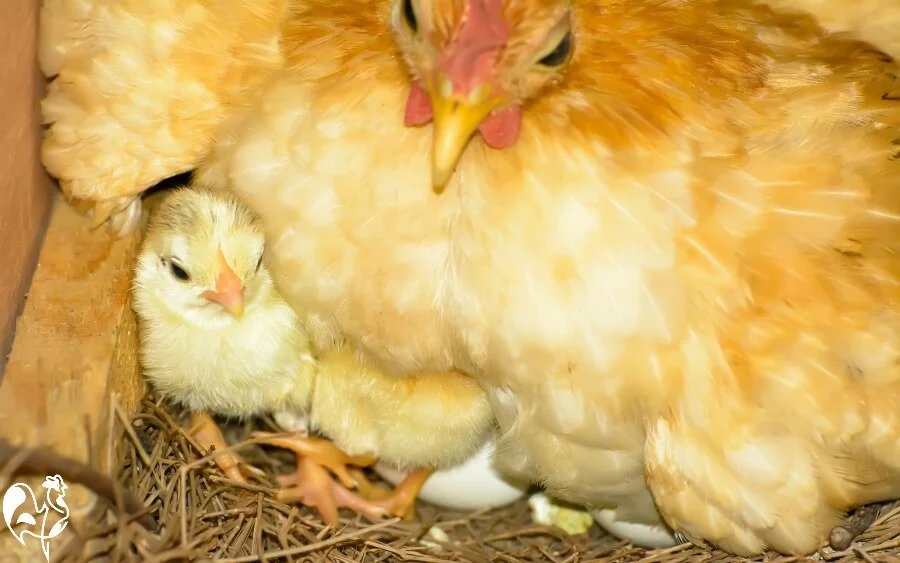
If you purchase a product through links on this page, I may receive a small commission at no extra cost to you. I only recommend products I have bought (or would buy) myself, and which I believe will genuinely benefit you. You can read my full disclosure policy here.
What to do.
1. Reduce light. If you've provided extra light in the coop during the winter, now is the time to reduce the hours. Don't do it suddenly. Reduce by a few minutes each day until there's no artificial light needed.
And always bear in mind that more than 17 hours of light is known to be counter-productive to hens(1).
2. Give your hens the best quality food you can afford. Free ranging and foraging is fine, but you need to be sure they're getting a balanced diet including necessary vitamins and minerals.
Layer feed is a good choice for all adult hens. You don't have to worry about that balance – it's done for you. I prefer this one because it's also organic and non-GMO. It's also great for fermenting.
3. Give treats sparingly. By all means give treats to layers at this time but remember, treats are just that: a treat, not to be eaten all the time.
Too many can make hens fat, and we know that fat is one of the causes of Sudden Chicken Death Syndrome.
4. Give some high protein foods. My flock go crazy for mealworms, and also love the "protein platter" I make for them.
5. Finally, to lay healthy eggs, hens need calcium. As our hens come out of winter into Spring, make sure they have a good source. Some people feed them back their own shells; I prefer to use oyster shell as a completely separate supply in case their own shells are already lacking in calcium.
Important:
Offer it in a separate dish – do not mix it in with their feed. Hens will instinctively take as much or as little as they need, and males won't take any.
For more information about oyster shell and the difference between it and grit, see this article.
2. Plan to incubate and hatch your own chicks!
Thinking of hatching chicks yourself, whether from your own or someone else's eggs? It's such an exciting time – and always most successful when it's well planned.
What to do.
6. Plan! If you've not hatched before, please, please think carefully before you start. Don't get sucked in (and don't let your children get sucked in!) by those cute little chicks in your local feed store.
Remember: those cute little chicks need special care. And they grow up into big, noisy hens and cockerels (roosters).
Who will look after them? What will your neighbours say? And what will you do with those who start crowing in a few weeks' time?
I've devised a quick "quiz" for anyone who's not had chicks (or chickens) before. Take a look now, before you start.
7. Think ahead! If you're a teacher wanting to hatch in the classroom, again, please think hard before you start.
I'm amazed every year at the numbers of well-meaning teachers who write to me asking what they should do with the eggs – and later, the chicks – at the weekend.
The answer is, incubated eggs need care, young chicks are vulnerable and need watching all the time.
Hatching chicks is not a part-time hobby!
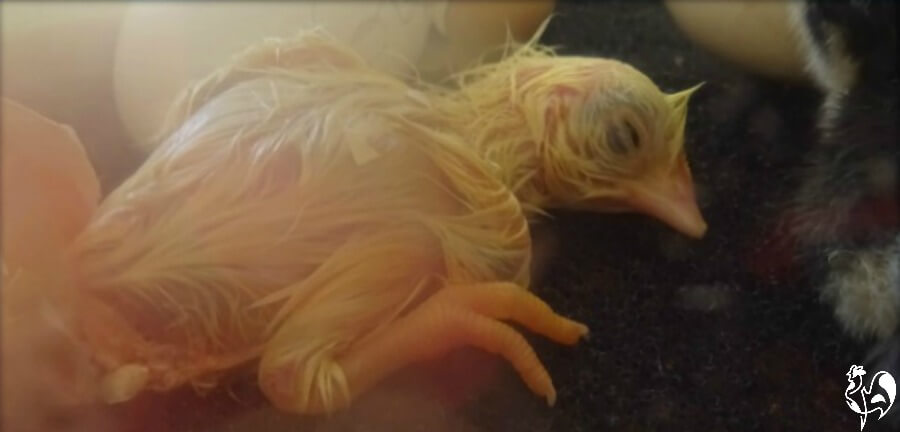 One of my newly-hatched, vulnerable chicks drying out in the brooder.
One of my newly-hatched, vulnerable chicks drying out in the brooder.8. Check you're equipped. Whether you've hatched before or not, now is the time to start getting your incubating equipment out. If you're wondering what kind of incubator you need, my guide to 9 different Brinsea incubators will help.
Check it works and give it a good clean, even if you cleaned before you put it away last time.
9. Join a group! Want to hatch along with other people? Think about joining my online incubating and hatching course, which will become available in April.
For more information make sure you join my newsletter group.
3. How to source chicks if you don't want to hatch your own.
If you're not thinking about hatching from your own eggs, you may be considering buying some chicks.
If so, you need to start planning which breeds you want. Most sources will have chicks available from the end of March or beginning of April, depending on where you live.
And although it may seem a little early, browsing hatchery catalogues or looking for local breeders is all part of the joy of looking forward to new life.
Order them now and choose a delivery date that works for you later in the spring.
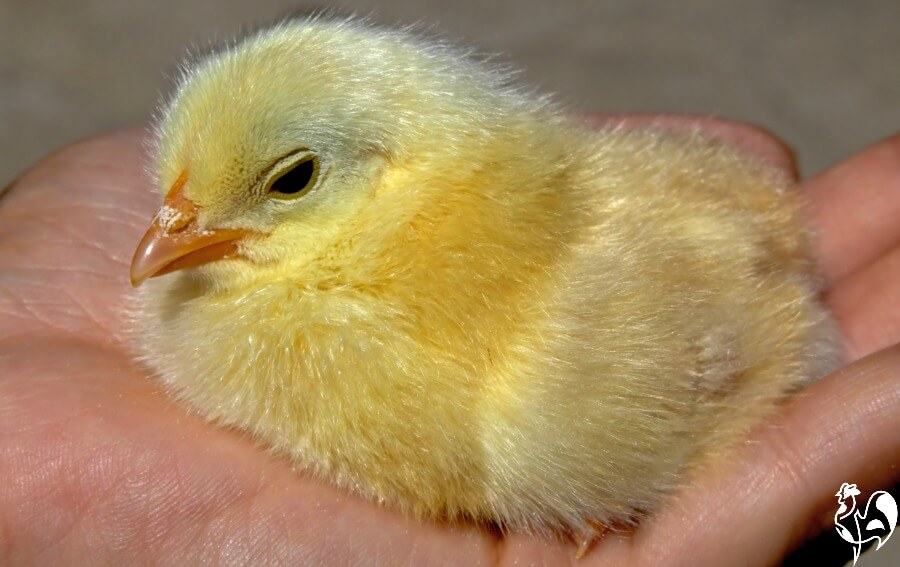 It's time to start thinking chicks!
It's time to start thinking chicks!What to do.
10. Browse. Hatcheries are a common source of chicks in the US, less so in other parts of the world. They have the largest supply of breeds, but there can be downsides. There are reports of customers receiving males in supposedly all-female clutches, and of chicks having physical problems.
But, lots of people love using hatcheries and, considering the number of chicks they raise, the problems are relatively rare.
The catalogues are a good way of researching different breeds. The Cackle Hatchery is one of the most popular and well regarded in the US and now guarantees 100% gender accuracy. You can find their online catalogue here.
For more information, I have a detailed review of the Cackle Hatchery which includes both positive and negative reviews.
11. Check out local chick sales. Your local feed store is likely to have chicks for sale in the Spring. Be aware, though, that most have "mixed runs" of chicks: a mix of male and female. With standard chicks sold like this, there's no way of telling which are male.
And truth to tell, some stores will advertise "female only" chicks when it's impossible to tell. Be careful. You don't want to end up with a run full of roosters.
12. Find a breeder. If you do your research and decide you want a particular breed, look for a local breeder. Poultry magazines usually have a list, and the internet is always a good source.
And if you can, go to a poultry show. People who show chickens are always passionate about their breed and will be more than happy to talk to you about the pros and cons (mostly pros!).
Some breeders will send by post; others insist on pick-up so as not to put the chicks in any danger.
13. Prepare for chicks sent by mail. If you do get chicks by post, remember to prepare well for their arrival. Ask for tracked delivery, and keep an eye open for when your flock is at a collection centre near you.
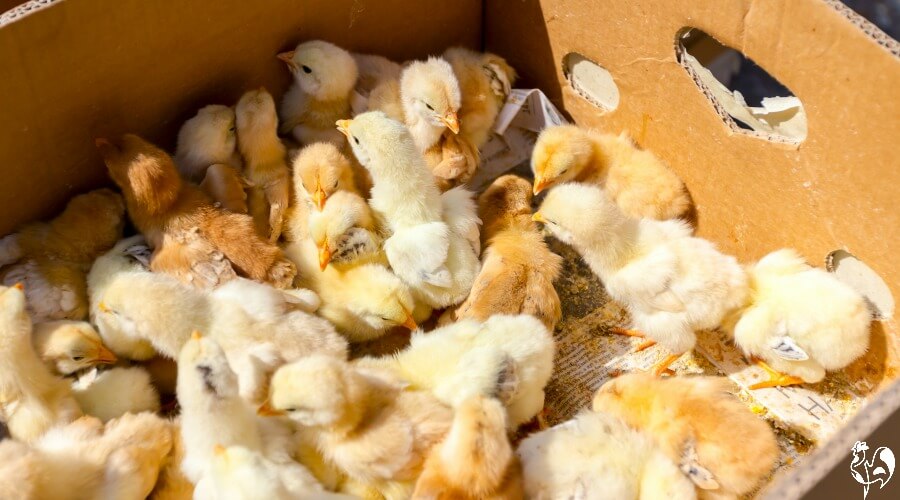 Don't leave mail order chicks at the depot - they'll need food and water on arrival.
Don't leave mail order chicks at the depot - they'll need food and water on arrival.Don't leave them sitting there! There have been instances of chicks dying through being left in too cold (or too hot!) depots. Pick them up as soon as they arrive.
Then, take them home, put them in their brooder and give them water and chick crumbs.
If they seem distressed - you'll hear loud chirping - feed some hard-boiled egg and add electrolytes to their water. You can easily make it at home from items in your store cupboard.
Cackle have an excellent section on how to care for chicks arriving by mail.
4. Prepare for predators.
This is the time of year when predators are starting to look for food for their young. And let's face it, chickens are on everyone's lunch menu, baby chicks perhaps even more so.
So, this is the time to check that your chicken run and coop are as predator-proof as they can be.
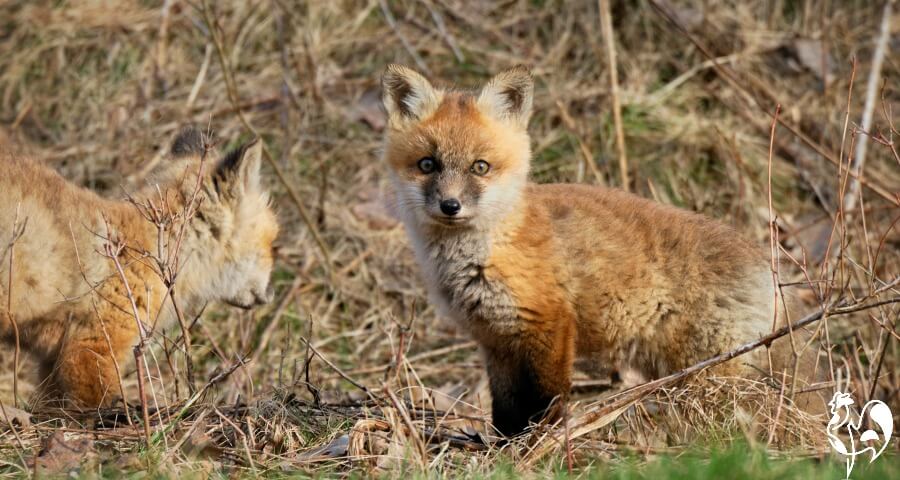 Foxes need to find food for their young at this time of year.
Foxes need to find food for their young at this time of year.What to do.
14. Check your security. If you have weasel-type predators who seem to kill for fun, take a look at my article about pine martens which are Italy's commonest weasel family predator. The information there refers to all weasel family predators.
15. Check your fencing for holes and make sure it's buried deep into the ground. I also have an "L" shaped piece of wire attached to the fence at ground level to prevent predators burrowing their way into the run.
And check your locks. Lots of animals, including foxes, are well able to open latch closures. Attach a padlock to be sure to keep them out, or invest in a secure, predator proof run like Omlet's.
Read my review of Omlet's runs, here.
16. Get rid of rodents. At this time of year, rats and mice are also looking for food. Be sure to protect your chickens - and your family - against them.
I have a whole series of articles about rats, here. Don't miss it!
5. Start seedlings that chickens will love.
So you have your existing flock or you're planning some additions, you've got a handle on how to feed them good food and occasional treats, and you want to plan ahead to the summer months just around the corner.
There's nothing nicer than browsing through some seed catalogues, planning your chicken-friendly veggie and fruit garden.
 Tiny seedlings starting to push through means Spring is on its way!
Tiny seedlings starting to push through means Spring is on its way!What to do.
17. Use Pinterest as a source of information. I have a Pinterest board with hundreds of pins drawn from reliable websites, all about how to grow a chicken friendly garden. You'll find it here. If you're new to gardening, I have a board for that, too, as well as one for herbs.
If you click over, please do "follow" me. All my boards are related in one way or another to keeping backyard chickens.
18. March is a good time to grow under cover from seed. Outside (it may be different for your part of the world) the ground is still too cold to plant.
But, looking forward to the summer ahead, we can start preparing land and adding organic fertiliser now, with a view to planting in about a month's time.
Chickens are helpful here. Allow them to follow as you dig. They'll find all kinds of delicious bugs in the ground, and help turning it over for you at the same time.
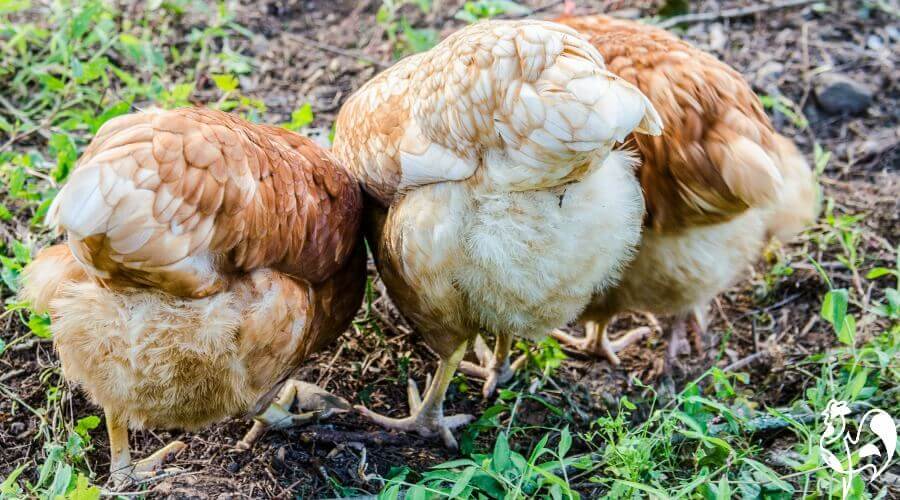 My Red Stars love to "help" dig over the soil in Spring.
My Red Stars love to "help" dig over the soil in Spring.19. Grow some early veg: At this time of year most seedlings can be started indoors (depending on your area, of course). Chickens have different tastes (mine are very picky!) but the veggies I find easiest to grow at this time of year which they almost always love are...
Lettuces: hardy varieties will grow virtually all year. And despite the name, "summer crisp" lettuces do well in the early spring. Plant seeds now and keep them going right through spring, summer and autumn (fall), replacing those you pick with some more seed.
Spinach: another early starter which does better when planted this early. I plant into large containers, as the roots from spinach are long and transplant into soil better when grown that way.
Kale: packed with nutrients, kale actually tastes better when it's transplanted in the early Spring.
Tomatoes: I live in Italy where tomatoes are a daily necessity! I start some seedlings in early March in my outdoor greenhouse, and different varieties next month.
Have you heard that tomatoes are bad for chickens? Not true! Yes, green, unripened tomatoes are, as are the vines.
Solution? Grow your tomatoes away from your chickens and feed them the very ripest, squishy tomatoes. Using a hanging variety and placing them on a tree branch above chicken height means they can't touch the vines, but will instantly eat any fallen, ripe tomatoes!
They'll love you for it!
20. Grow flowers from seed! One of the best flowers to grow for your flock is the sunflower. Buying the seeds for your chickens later in the year will be expensive, so get some to plant now and you'll have your own seeds by September.
They're also very easy to grow in your garden, or in pots on your terrace. There are all kinds of varieties, from the dwarf varieties right up to massive 6-footers!
Healthy for your flock, fun for your kids.
Take a look at this short video of flowers to start now for chicken health later!

Other pages you may find useful.
Sources and further reading.
1. Ostrander, C and Turner, C.N.: Effect of various intensities of light on egg production of single comb white Leghorn pullets. Pub. Journal of Poultry Science, 1962.
- Home
- Monthly care
- March
